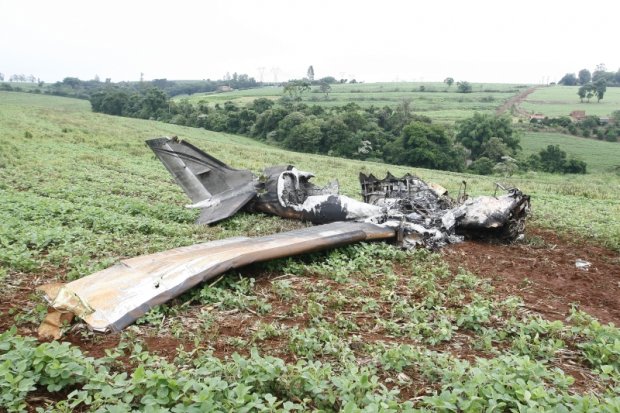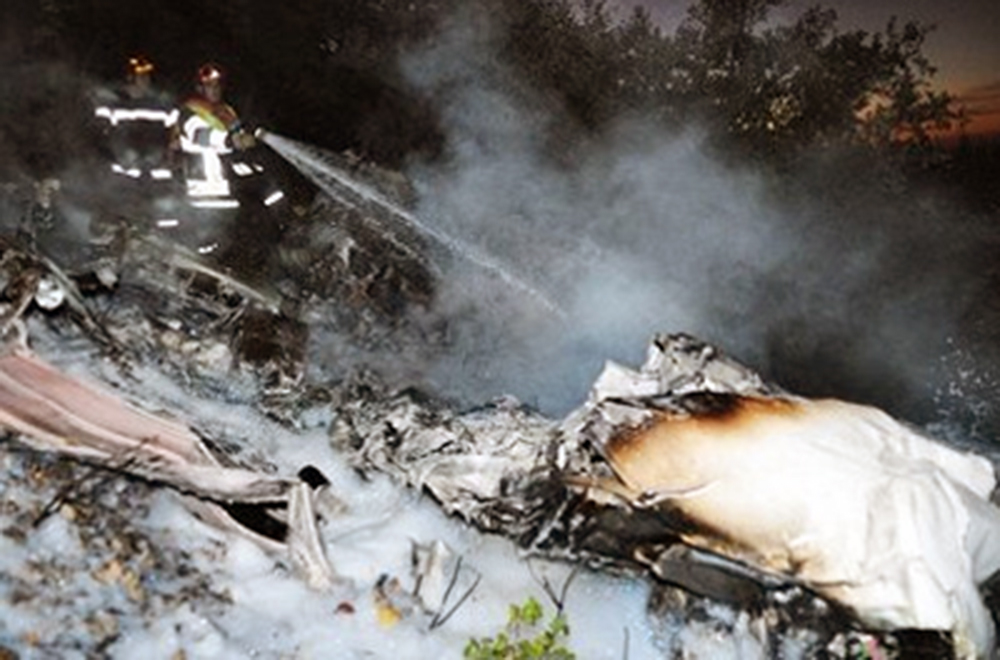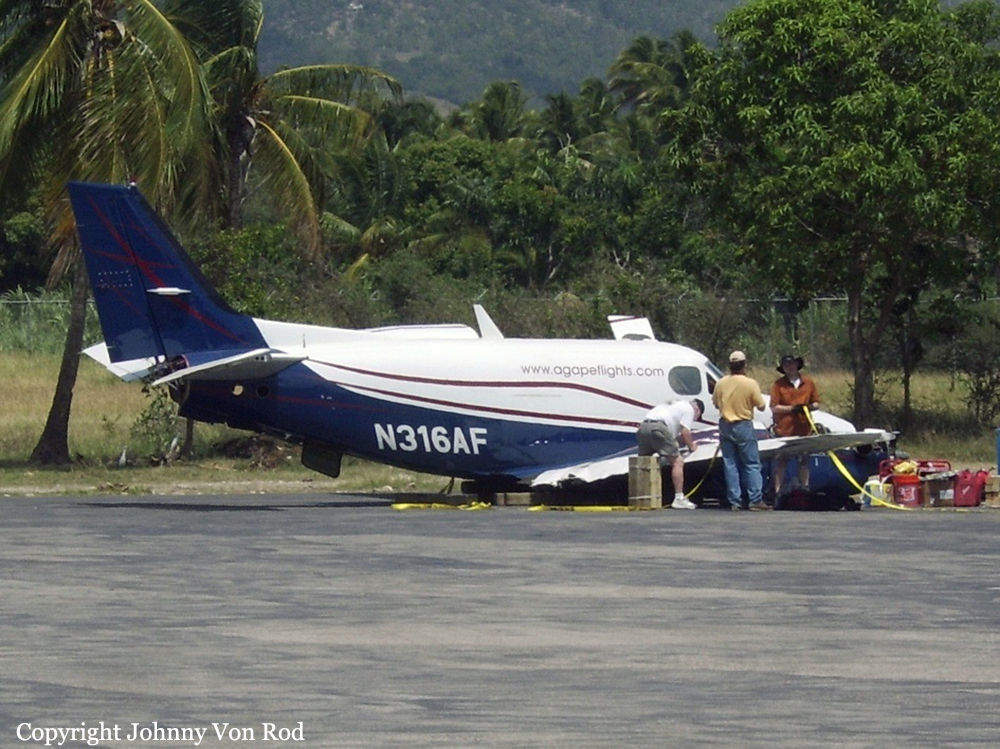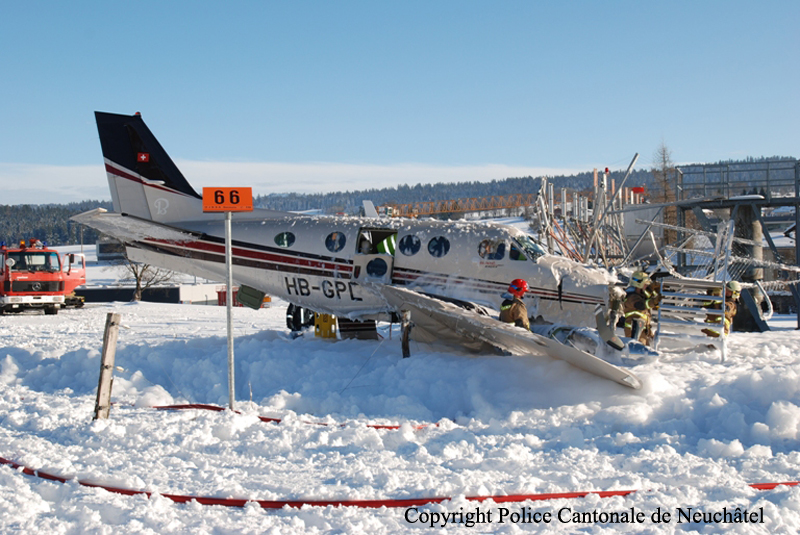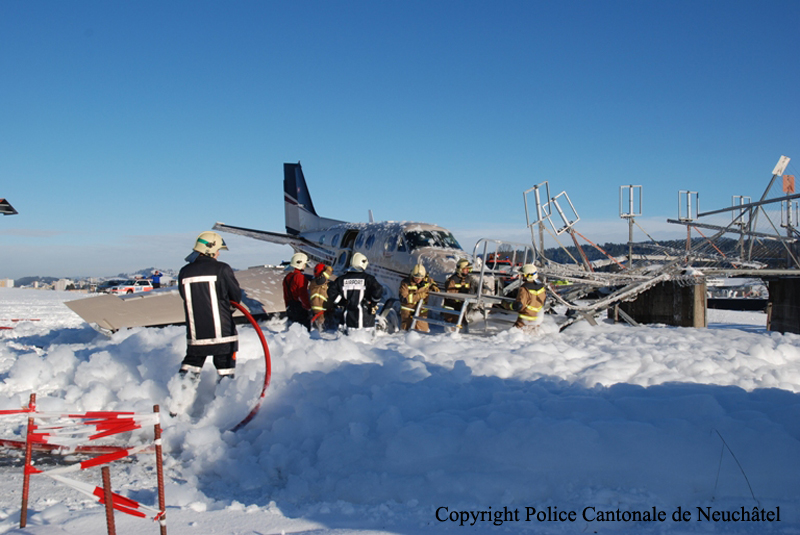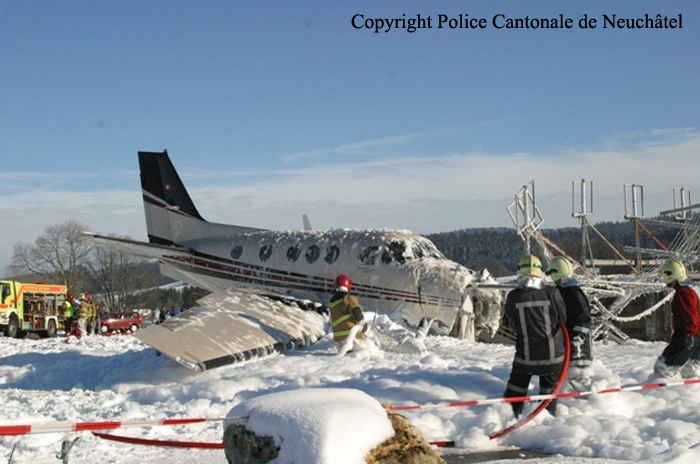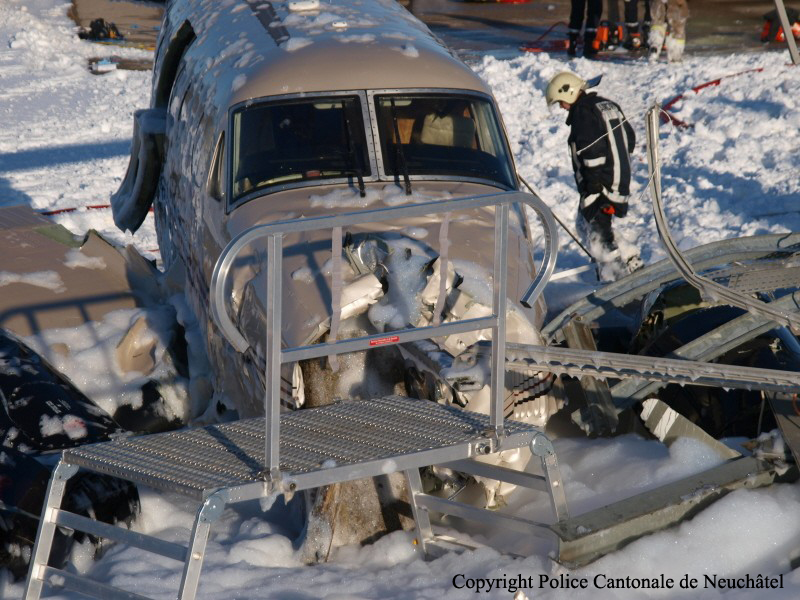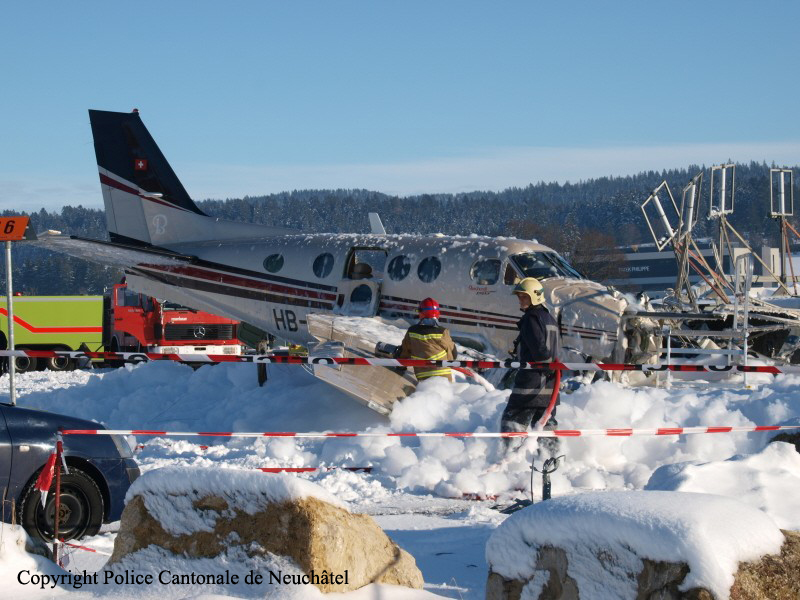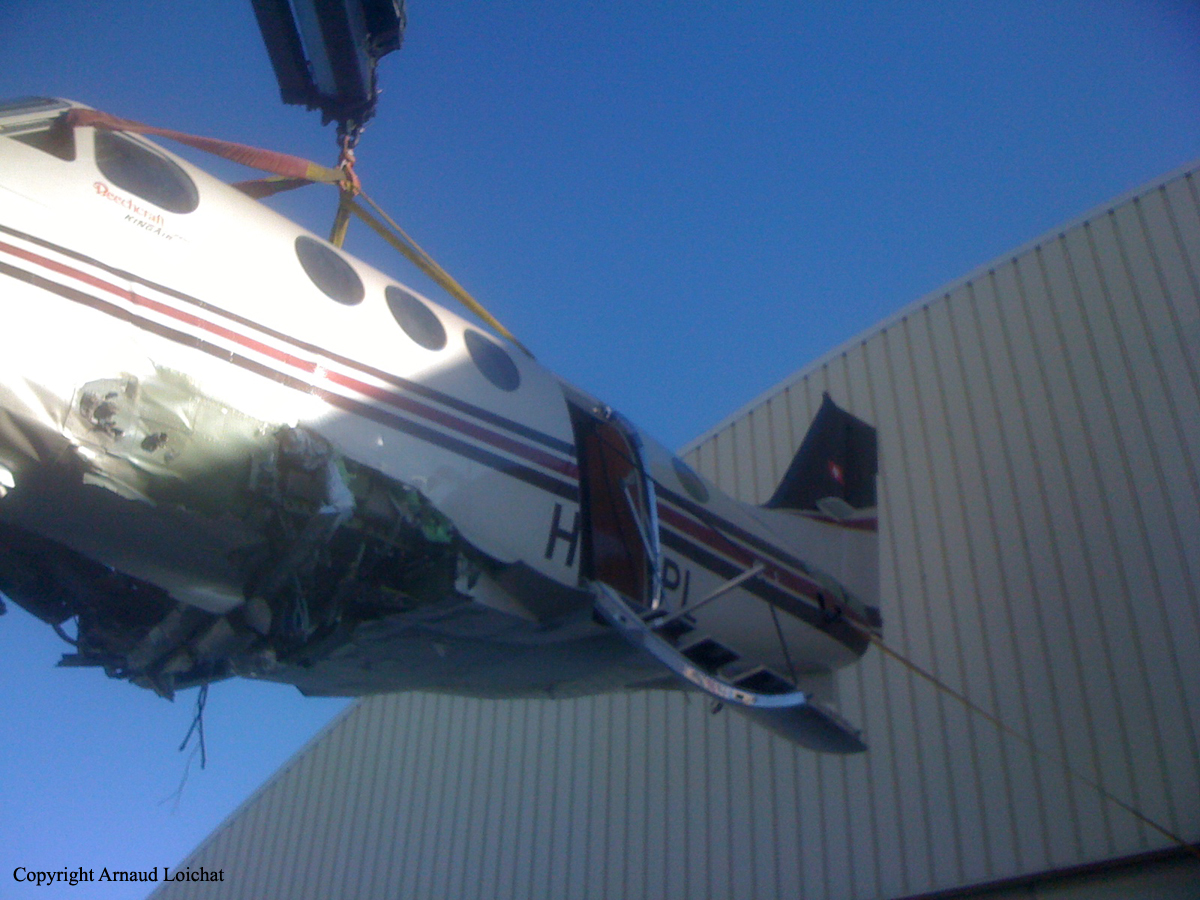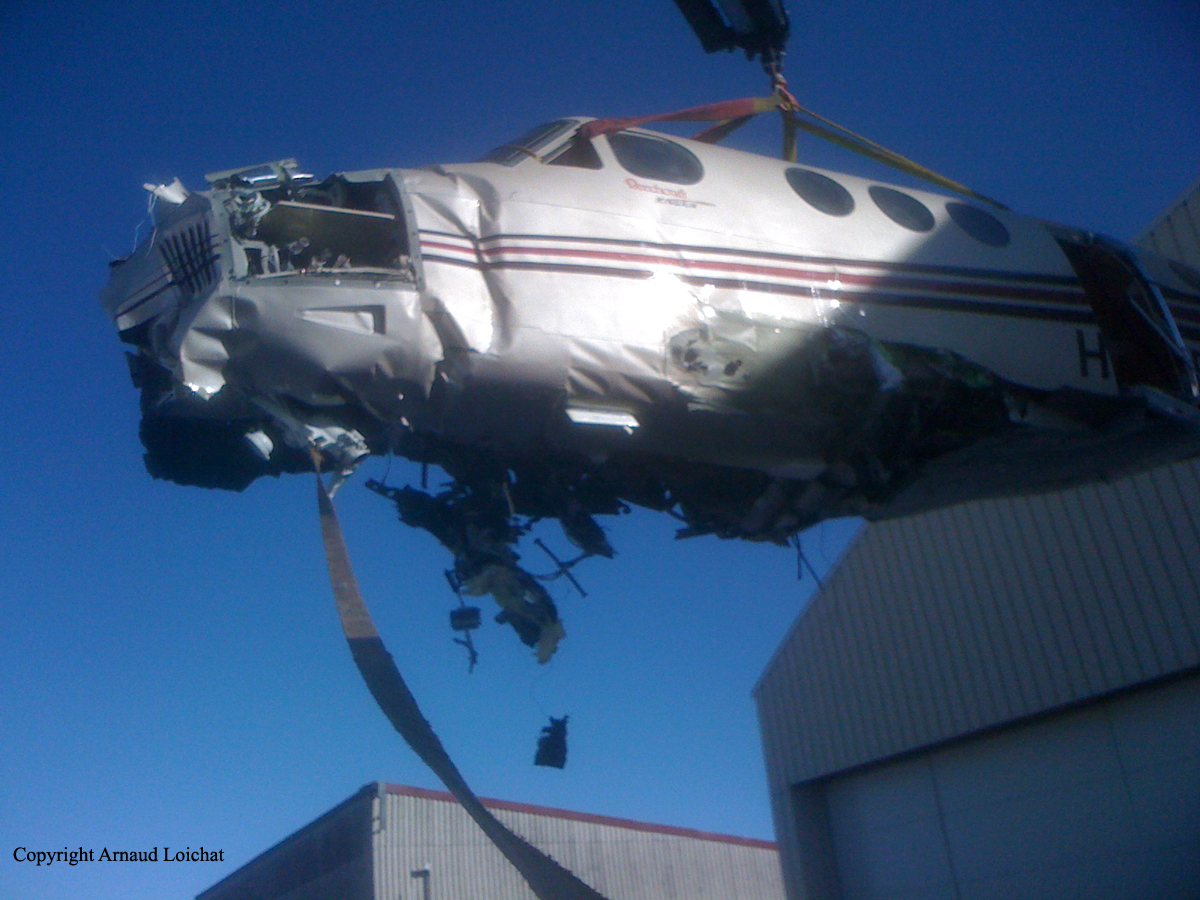Crash of a Beechcraft King Air 90 in Londrina
Date & Time:
Dec 12, 2010 at 2140 LT
Registration:
PT-WUG
Survivors:
Yes
MSN:
LJ-1511
YOM:
1998
Crew on board:
2
Crew fatalities:
Pax on board:
5
Pax fatalities:
Other fatalities:
Total fatalities:
0
Circumstances:
On final approach to Londrina-Governador José Richa airport in poor weather conditions, aircraft encountered windshear. It hit a small hill and eventually crashed in a field short of runway. All seven occupants injured and aircraft destroyed by fire.

